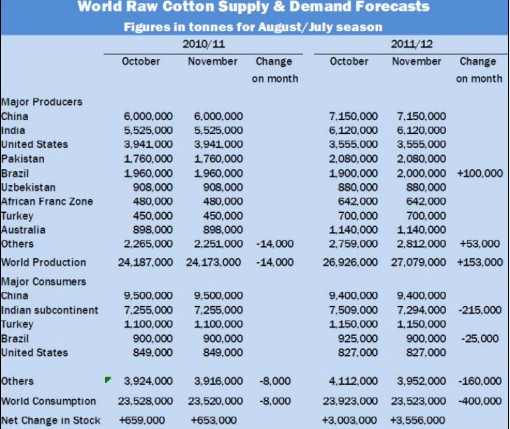|
Almost two years to the day after a massive price jump destabilised global cotton markets, the price of cotton is again surging. The benchmark cotton contract on Monday soared to 84.60 cents a pound, the highest level in two years and one breached on only five days in the past 15 years. The increase has revived uneasy feelings among US cotton merchants recalling the dramatic rise in March 2008 that cost them hundreds of millions of dollars, forcing some old industry names out of business. Merchants-middlemen between growers and mills-are playing safe this time after the buying juggernaut that pushed cotton briefly above $1 a pound two years ago. Jordan Lea, chairman of Eastern Trading, a US cotton merchant, says: It just looks and feels a bit like March ??08, not to mention it is literally the anniversary of the event. Nobody has a sense of restored confidence in this market yet. Cotton's latest surge came after China, the largest producer and consumer of the plant, last week said its 2009 crop fell 14.6 per cent last year to 6.4m tones. The figure was weaker than estimates from the US Department of Agriculture ?? considered the gold standard in crop forecasting ?? and will tighten the global supply and demand balance.
The USDA already predicts the 2009-10 growing season will mark the third straight year of declining global production as farmers cut planting due to higher costs and land ceded to plantings of corn and soyabeans. The agency says demand will grow by 5 per cent in the year ending this July, marking a fourth straight year in which demand outstrips supply. Cotton, like most commodities, is a volatile market. Front-month futures have more than doubled in the past year. Yesterday, ICE May cotton, the current benchmark, surged to 84.60 cents, up 2.5 per cent on the day. It later traded at 83.75 cents. But, as with copper, economists say the fibre serves as a barometer of macroeconomic conditions. Strong growth in cotton consumption is characteristic of periods of economic recovery, as restocking of inventories throughout the textile supply chain magnifies the effect of a rebound in retail demand, US Department of Agriculture analysts said in a speech last month. China has reopened its doors to cotton imports after restrictions last year cut into inventories and pushed prices above $1 a pound. This is likely to lead to roughly a third more cotton imports this growing year, the USDA said. This week, a large trader is set to take delivery of 64,000 tonnes of cotton as the March ICE futures contract expires. Traders believe most of that cotton is likely to end up in China where demand for the fibre is strong. For US textile mills, which have lost out to cheaper rivals, the price rise is having a terrible effect, said Cass Johnson, president of the National Council of Textile Organisations. They have very little pricing power for their finished products and yet raw materials are going up.
|
|
Cotton at two-year peak after fall in China crop
Updated: 2010-3-2 Source: The Financial Times

Recommended News
Photo Gallery
Most Popular




